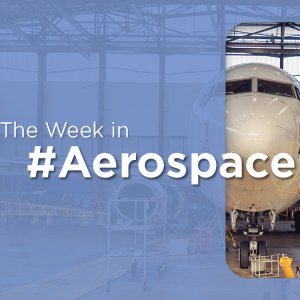A Roadmap for Migrating to the Aerospace Industry

STORY INLINE POST
The aerospace clusters in Mexico are helping companies to migrate into the aerospace industry. Our country offers highly qualified human capital and very relevant experience in other manufacturing sectors, such as automotive, medical devices and oil and gas. This is a great platform to start a transition to the aerospace sector; however, it is not enough to achieve a successful migration.
The aerospace industry is very capital intensive. The return on investment may be high but the payback periods could take 10 years or even more. Migrating to the aerospace industry is a luxury that only a few companies can afford. For starters, this industry is highly regulated, very rigorous and with a strong focus on safety. Regulations are all over the place and quality management is extremely strict. Also, to be part of this selected club, you must have some credentials depending on your tier level in the supply chain. You must be AS9100-certified and sometimes NADCAP-certified as well. Additionally, sometimes companies need special OEM approvals that can be even stricter than industry certifications. These efforts can take years and some serious invested money. And this is just the beginning.
This may sound very pessimistic but it is not. I’m just providing an objective and realistic view of what it takes to become an aerospace supplier. Supplier migration is a trend that we frequently see around the world, especially in emerging markets that are less mature and more exposed to market risks and global technology trends, such as electrification. This may sound counterintuitive but there are many companies that are seeking to migrate to other sectors for survival purposes.
In Mexico, for example, we have many automotive companies at different tier levels that may be in danger of disappearing due to electrification. The demand for many mechanical components is dramatically dropping. There are thousands of part numbers that are no longer required in this new business context. This is when supplier migration became an alternative for some companies to diversify their participation into different sectors to be able to capture some value and offset the lower demand for certain components and systems.
Is the aerospace industry the right place to migrate to? The answer is that it depends. This is in fact a very difficult question to answer. To get to the right answer, it is necessary to do the homework. Doing the homework means that companies need to conduct a deep assessment of their capabilities and resources. It is strongly recommended that these companies hire real experts from the industry who can deeply evaluate the current position of the company and determine the gaps that must be closed to achieve the desired goal.
Once the gaps are clear, companies can start creating a long-term strategy and take specific and determined actions for a successful transition. This sounds logical and easier than it actually is but creating and executing the strategy could take several years, millions of dollars in investment and a lot of patience to see results. Having a dedicated team for the transition, a solid commitment from the top management team, and a multi-annual budget plan could speed up the process and accelerate the results.
In my opinion, there is one crucial decision that must be taken from day one, and that is whether the company will try to catch up with current technology trends or bet on the future and align its migration strategy with future trends. Since this is a long-term game, my recommendation is to bet on the future, unless you can quickly catch up with the present and gain some benefit in the near future. Regardless of the approach, a long-term vision should always remain.
For those companies that are already successful in an adjacent industry and that are aiming to migrate into the aerospace sector, do not forget to continue running your original business. This will provide stability to your migration plans and will continue to provide the much-needed resources to fund those efforts. In other words, the original business can serve as the cash cow that can continue boosting the company’s overall income to support the less profitable endeavor while it grows and delivers the expected returns.
Once the migration is complete, do not rush the results. Take little steps and make sure you continue to learn. Once a new company is inserted into an aerospace value chain, it will need to navigate through new and different complexities, and most of them will cost money. When I mentioned that this is a long-term game, I was not only referring to how companies can get there but also to the way they do business. Buyers will see new entrants as good opportunities but they will be reluctant to place big contracts or purchase orders until recently migrated companies can demonstrate high standards of performance and exceptional delivery on their KPIs. This is how trust is built in this industry.
Finally, recently migrated companies will need a mindset shift. The aerospace industry is definitely challenging and complex but it is also very noble. Once companies are part of this select club, they will receive tremendous support from customers and other key members of the aerospace ecosystem. In contrast with other industries, such as automotive, the aerospace industry is known for its increased transparency, teamwork, and long-term relationships. Companies are not just suppliers or customers, they are partners. Contracts and commitments are signed on a long-term basis, so it is absolutely critical to take care of the commercial relationship.
My hope is that this article can be useful for all those interested in moving to the aerospace sector. I hope I was able to depict all the realities of this passionate industry and that you can learn a thing or two before taking such a big step. If you are determined to do it, I can assure you that once you are in the game you will enjoy the long business cycles that will provide you with stability and certainty in times of crisis and difficulty.








 By Alberto Robles | Head of Flight Safety – Latin America -
Tue, 08/09/2022 - 15:00
By Alberto Robles | Head of Flight Safety – Latin America -
Tue, 08/09/2022 - 15:00
















